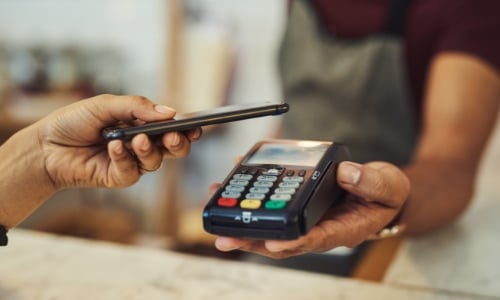Introduction
While Amazon.com is a significant global e-commerce player, its direct strategy in Japan Mobile Payment Market appears to be more focused on integrating with existing popular payment methods rather than pushing a proprietary mobile payment solution like Amazon Pay as prominently as in some other regions. Here's a breakdown of their likely strategies:
· Integration with Local Payment Preferences: Amazon Japan strategically incorporates payment methods that are widely adopted and preferred by Japanese consumers. This includes:
o Credit and Debit Cards: Acceptance of major international and domestic cards like Visa, Mastercard, American Express, and JCB is fundamental.
o Convenience Store Payments (Konbini): This is a crucial option in Japan, allowing customers to pay in cash at convenience stores after placing an online order. Amazon Japan supports payments at major chains like 7-Eleven, Lawson, FamilyMart, and others. This caters to consumers who prefer not to use credit cards online or want to manage their spending.
o Bank Transfers: Offering bank transfer as a payment method accommodates customers without credit cards or those who prefer this traditional method.
o E-Money: Integration with popular Japanese e-money services like Rakuten Edy, Mobile Suica, and Shiharai-Hisho provides further payment flexibility. These are widely used for daily transactions in Japan.
o Mobile Carrier Billing: Allowing payments to be charged to mobile phone bills through services like NTT Docomo's d-Barai, au Kantan Kessai, and SoftBank/Y! Mobile Matomete Shiharai aligns with the high mobile penetration and usage of such services in Japan.
o Digital Wallets: While not a proprietary push for Amazon Pay, Amazon Japan increasingly accepts popular local digital wallets like PayPay and Merpay, recognizing their significant user base.
· Leveraging Existing Amazon Services: Amazon likely integrates payment options within its existing ecosystem to enhance user convenience:
o Amazon Gift Cards: These are popular in Japan and can be easily redeemed on the platform.
o Amazon Points: Allowing customers to use Amazon Points for purchases provides another payment method and encourages loyalty.
o Pay Later (Paidy): Offering a "buy now, pay later" option caters to consumer demand for flexible payment terms.
· Partnerships: Amazon's agreement with Boku in November 2024 to supply digital wallet and other payment methods to Amazon Japan suggests a strategy of partnering with established mobile payment providers to expand their offerings and reach.
· Focus on E-commerce Experience: Amazon's primary focus in Japan remains delivering a seamless e-commerce experience. Offering a wide array of familiar and trusted payment methods is a key component of this strategy, reducing cart abandonment and increasing customer satisfaction.
Emerging Innovations and Developments in the Japan Mobile Payment Market
The Japan mobile payment market is undergoing significant evolution, driven by technological advancements, government initiatives, and changing consumer behavior. Key emerging innovations and developments include:
· Increased Adoption of Mobile Payments: Fueled by high smartphone penetration and government promotion of cashless transactions, mobile payments are experiencing rapid growth. The market is projected to reach USD 7.21 billion by 2030, with a CAGR of 14.3% from 2024.
· Dominance of QR Code and NFC Payments: Both proximity payment methods are gaining traction. QR code payments, facilitated by platforms like PayPay, Rakuten Pay, and dbarai, are popular for their ease of use and cost-effectiveness for merchants. NFC payments offer quick, contactless transactions.
· Government Push for a Cashless Society: The Japanese government is actively promoting digital payments through various initiatives, including rebates for digital transactions and tax incentives for businesses. Their goal is to achieve a 40% cashless transaction rate.
· Rise of Contactless Payments: Beyond mobile wallets, contactless payments via credit and debit cards are also increasing, driven by convenience and hygiene concerns.
· Integration of Mobile Payments with Other Services: Mobile payment solutions are increasingly being integrated with transportation systems (trains, buses), loyalty programs, and other daily services, making them a more integral part of consumers' lives.
· Advanced Security Features: Innovations like biometric authentication (fingerprint, facial recognition) and encryption are being implemented to enhance the security and build user trust in mobile payment systems.
· Real-Time Payments: The emergence of real-time payment systems is creating opportunities for faster and more efficient transactions across various sectors, including e-commerce and peer-to-peer lending.
· Fintech Innovations: Growing interest in fintech innovations like blockchain and DeFi could introduce new secure and transparent payment methods in the future.
· Cross-Border Payments: Partnerships between mobile payment providers are expanding cross-border payment capabilities, facilitating smoother transactions for international travelers and online shoppers. For example, PayPay and Alipay+ have expanded their collaboration to allow more global travelers to use their preferred mobile wallets in Japan.
· AI and Personalization: Artificial intelligence is being used to analyze payment data, improve fraud detection, and offer personalized payment recommendations and offers to consumers.
· Expansion of Digital Wallets: Digital wallets are becoming increasingly popular due to their user-friendly interfaces, security features, and integration of loyalty rewards. Leading players like PayPay, LINE Pay, and Rakuten Pay continue to expand their user bases and functionalities.
· Growth in E-commerce Payments: The rise of online shopping is a significant driver for mobile payment adoption, as consumers demand secure and seamless digital payment options for online transactions.
In conclusion, while Amazon Japan strategically integrates with the prevalent mobile payment methods favored by Japanese consumers, the broader market is characterized by rapid growth, increasing adoption of QR code and NFC payments, strong government support for cashless transactions, and continuous innovation in security and functionality. This dynamic landscape presents both opportunities and challenges for all players in the Japanese mobile payment ecosystem.





Comments